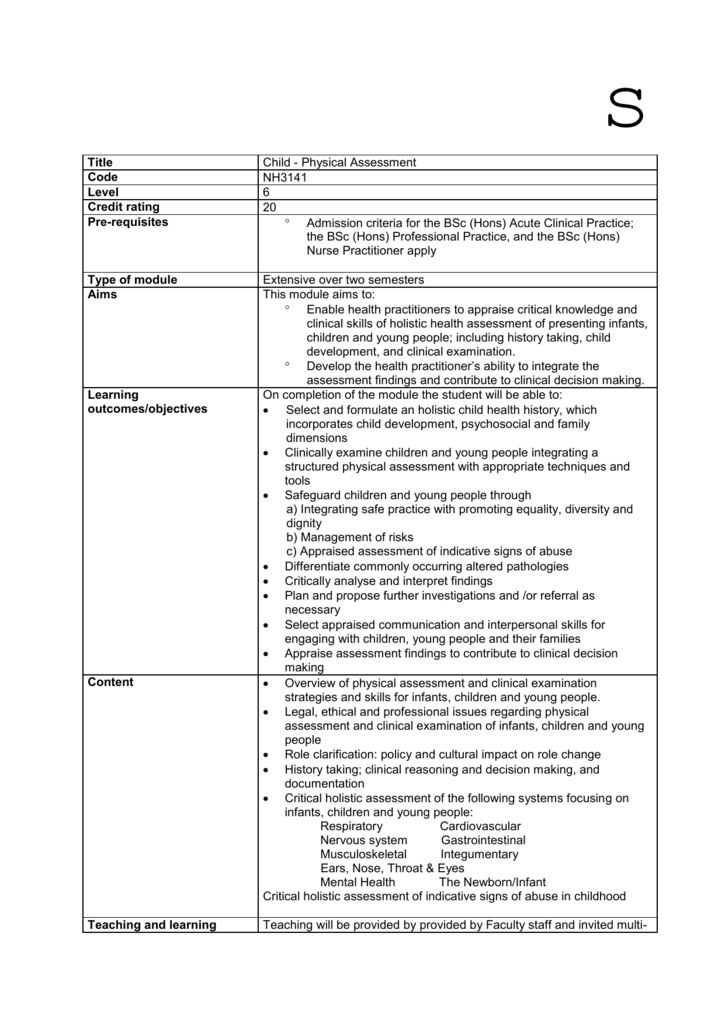
Physical Assessment Of Child. With young children asking the parents how they know the child is in pain may help describe its type location and severity. Recognize expected normal findings for children at various ages. Assess the range of motion. Pediatric physical assessment in children 1.

Past medical history current medications chief complaint signs and symptoms oldcarts assessment of systems neuro heent respiratory cardiac gi gu integumentary musculoskeletal pain etc. In the infant the nurse gently moves the head to observe for any stiffness in the neck. The ability to perform a physical examination is fundamental to nursing care of the child. Perform a comprehensive physical examination in a sequence appropriate to the child s age. The physical examination may be part of a well child assessment it may be the admission examination when a child enters the hospital or it may be part of an initial assessment for home health care. Record the physical examination according to the head to toe format.
Recognize expected normal findings for children at various ages.
Prepreparation for assessment examination room equipments position nurse preparation methods of assessment inspection palpation percussion auscultation head to toe assessment vital parameters general markers of disease. Assessment includes 1 type 2 location 3 severity 4 duration and 5 influencing factors 10. Findings from a thorough physical examination help to determine a child s health status which is the basis of all. Prepreparation for assessment examination room equipments position nurse preparation methods of assessment inspection palpation percussion auscultation head to toe assessment vital parameters general markers of disease. In the infant the nurse gently moves the head to observe for any stiffness in the neck. The ability to perform a physical examination is fundamental to nursing care of the child.